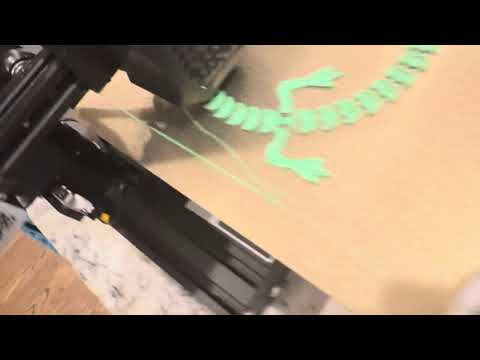I’ve had this printer for 2 months and it’s causing me so much heartache… at first it printed a few things pretty well. Basic things, but I didn’t have to do much at all to get it to work. I’d print a unicorn, a christmas tree, a dog, etc. Then I printed a really complicated articulated dragon, perfecto.
But ever since then, I’ve been totally up a creek. I started of course with all the standard parts from Creality. Then I switched to a new filament, LOCYFENS Silk PLA Filament Multicolor, 3D Printer Filament Rainbow PLA Filament 1.75mm +/- 0.02mm. But it worked like a charm for several prints, and then lastly, the dragon.
Now, I seem to have many different problems. And while that’s possible, I would tend to think that it’s all one thing, and manifesting in different ways. I’m a total amateur, so I’m learning this troubleshooting as I go.
First I think the hot end is clogging, so I replace the nozzle. Then I realize that the filament itself is literally worn through by the gears of the extruder. So is the nozzle not hot enough? I try 205, 210. I am trying to make another dragon, and I think I have found the issue now, so I print another. Makes it through about 24 hours of printing before boom, total failure, again at the gears of the extruder.
Do I just need a better extruder? Or is there a setting that will improve this one? I don’t even know if I should be wanted it to grab the filament tighter or looser - on the one hand it’s obviously slipping, so maybe it’s too loose. But it’s so tight that it grinds through it. Or again, is that the wrong tree to be barking up because the problem really exists somewhere else in the path, like the nozzle or the rest of the hot end? How does it print for 24 hours before the problem manifests?
I know answering these questions is incredibly hard without seeing it, and relying only on my untrained reports. How can I get expert advice? I thought about posting a task on upwork for a 3D printing expert, but then I got that 24 good hours and I thought I had solved it.
Any suggestions?
